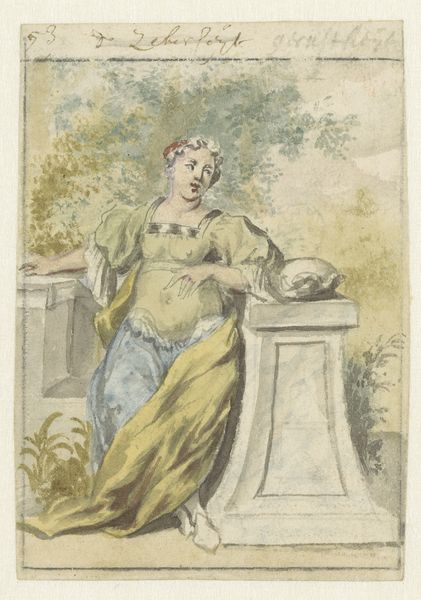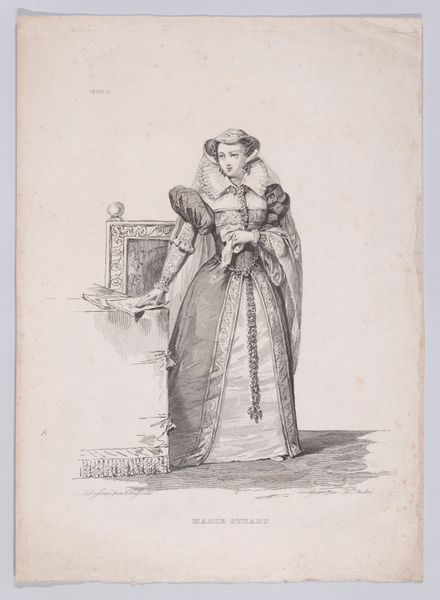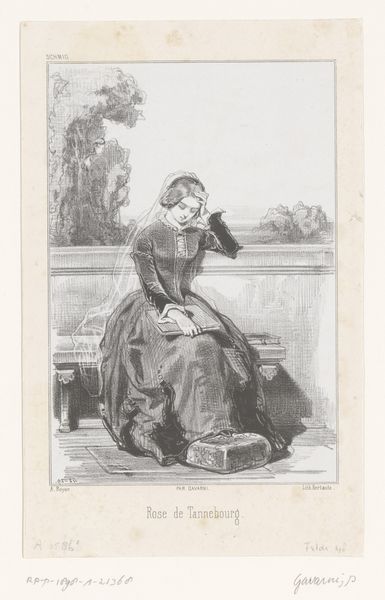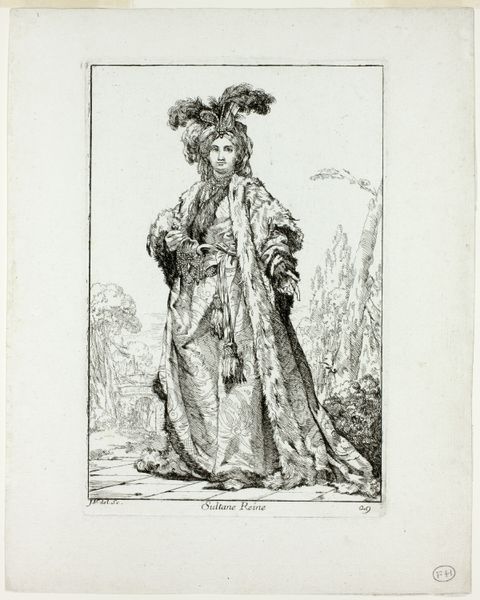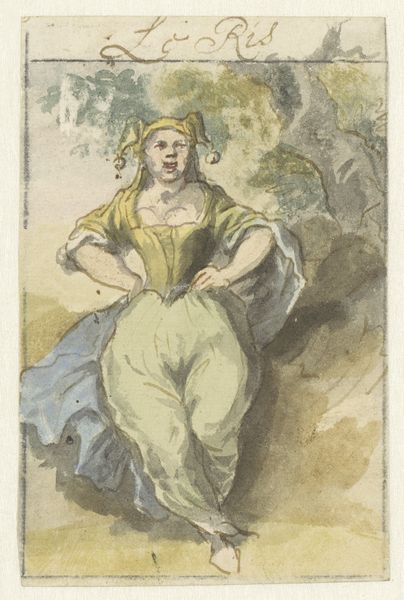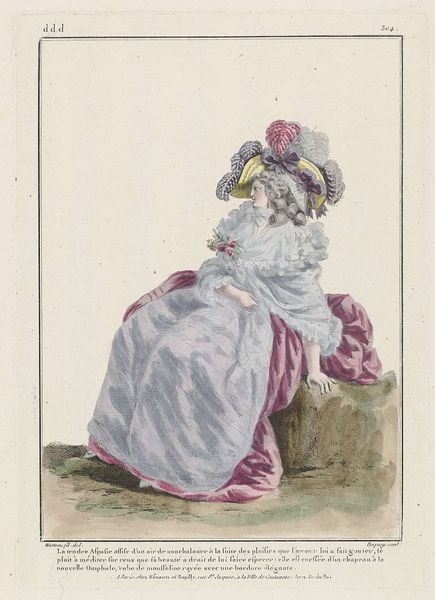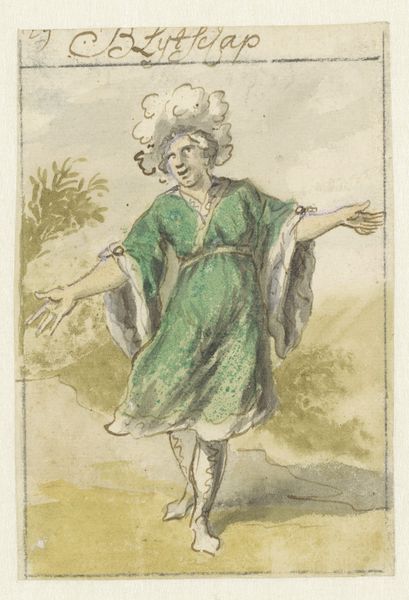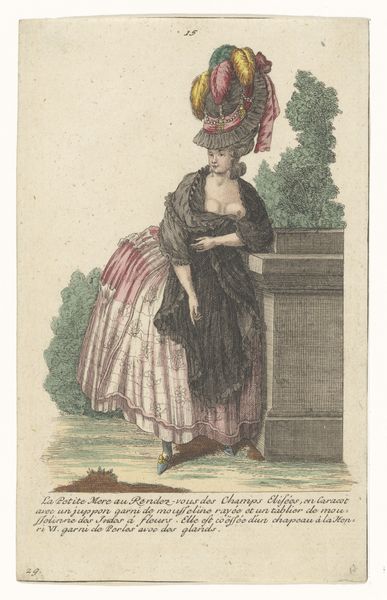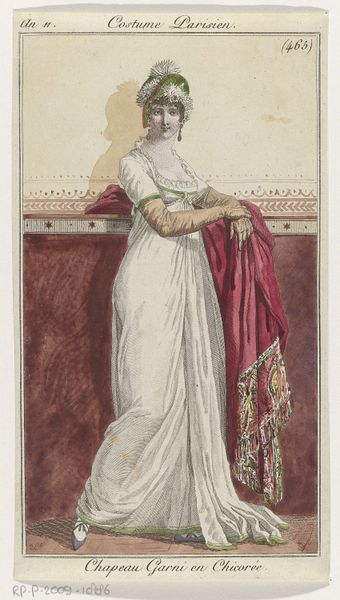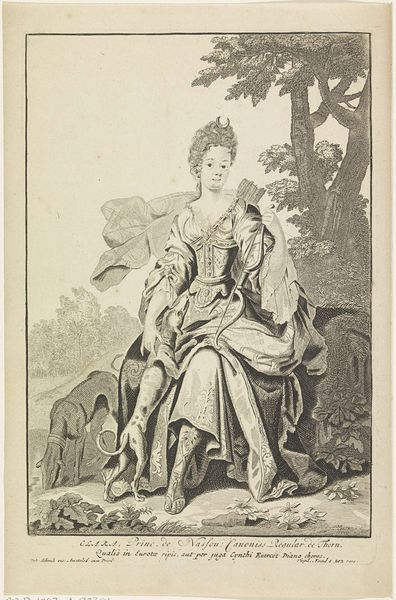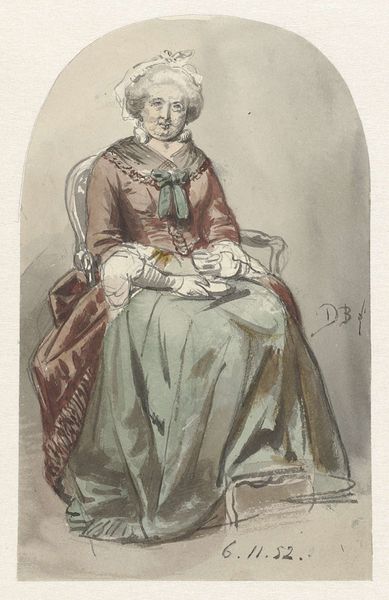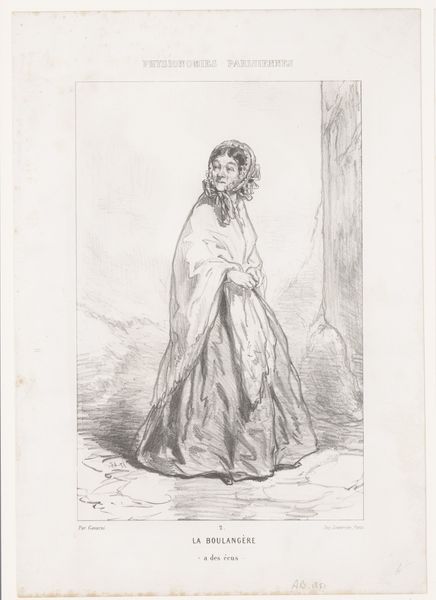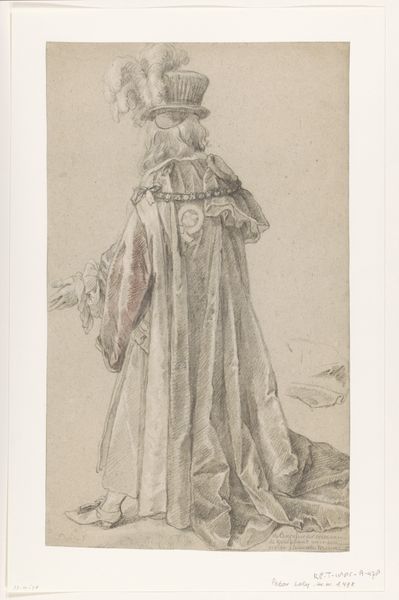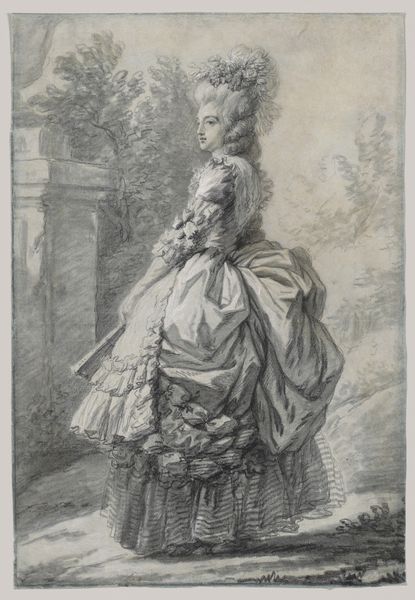
painting, watercolor
#
portrait
#
baroque
#
painting
#
watercolor
#
watercolour illustration
#
watercolor
Dimensions: height 145 mm, width 94 mm
Copyright: Rijks Museum: Open Domain
Pieter van den Berge created this small watercolor titled "Verachting," or "Disdain," sometime before his death in 1737. The artist used watercolor paints on paper, which would have allowed for fluidity and quick execution, which would have been important for capturing the fleeting expressions of emotion. The artwork depicts a figure with a scowling expression, embodying disdain. The layering of colors creates depth, with transparent washes of pink, yellow, and grey, built up to define the figure's clothing, skin tone, and the suggestion of a natural background. The immediacy of the watercolor technique lends itself well to capturing the spontaneity of human emotion, with the washes of color mirroring the fluidity of feelings. The work would have been considered 'high art,' in that is was made for its aesthetic value, not for any practical purposes. Considering the cultural context, the artist's choice of materials and method reveals an intention to capture human emotion in a medium that allows for both precision and expressiveness. This prompts us to reflect on the ways in which artists throughout history have deployed materials and processes to embody and evoke the complexities of human experience.
Comments
No comments
Be the first to comment and join the conversation on the ultimate creative platform.
